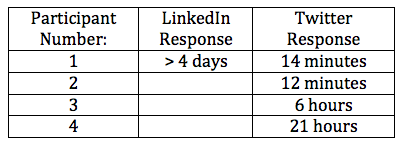On October 31, 2009 I published my 35 Social Media Theses, subtitled “The Disputation of Chancellor Lee Aase on the Power and Efficacy of Social Media,” on the 492nd anniversary of Martin Luther posting his disputation on indulgences on the church door in Wittenburg.
Since then, I’ve delivered well over 100 presentations in 7 countries, and in almost every one I’ve used my 35 Theses (get a PDF) as the organizing principle, beginning with the story of how a technological innovation, the Gutenberg movable type printing press, helped make Luther’s theses the first massively viral communication, spreading throughout Germany in two weeks and reaching the rest of Europe in two months.
It all ties to my first two theses:
- Social media are as old as human speech, with air being the medium through which sound waves propagated.
- Electronic tools merely facilitate broader and more efficient transmission by overcoming inertia and friction.
 So it was interesting when Dr. Victor Montori, our former medical director for the Mayo Clinic Center for Social Media, sent me a link to an article in the current issue of The Economist, “How Luther went viral.” I’m sure it was unintentional imitation, but I’m sincerely flattered anyway. Here’s an excerpt:
So it was interesting when Dr. Victor Montori, our former medical director for the Mayo Clinic Center for Social Media, sent me a link to an article in the current issue of The Economist, “How Luther went viral.” I’m sure it was unintentional imitation, but I’m sincerely flattered anyway. Here’s an excerpt:
Although they were written in Latin, the “95 Theses” caused an immediate stir, first within academic circles in Wittenberg and then farther afield. In December 1517 printed editions of the theses, in the form of pamphlets and broadsheets, appeared simultaneously in Leipzig, Nuremberg and Basel, paid for by Luther’s friends to whom he had sent copies. German translations, which could be read by a wider public than Latin-speaking academics and clergy, soon followed and quickly spread throughout the German-speaking lands. Luther’s friend Friedrich Myconius later wrote that “hardly 14 days had passed when these propositions were known throughout Germany and within four weeks almost all of Christendom was familiar with them.”
The unintentional but rapid spread of the “95 Theses” alerted Luther to the way in which media passed from one person to another could quickly reach a wide audience. “They are printed and circulated far beyond my expectation,” he wrote in March 1518 to a publisher in Nuremberg who had published a German translation of the theses.
This is required reading for SMUGgles. The article does a great job of analyzing at length what I can only briefly introduce in 90 seconds or so in my presentations. It applies network theory to describe how technology enabled such rapid spread, and does a great job of explaining how and why it happened.
I read lots because I enjoy learning, but one of the extra pleasures it provides is validation. I certainly have gotten new and helpful ideas from Guy Kawasaki, Seth Godin, Gary Vaynerchuk and others, but it’s especially encouraging when they affirm what I’m already doing.
For example, if you’ve heard one of my presentations you know that I typically introduce my family, including my grandchildren. After I had been doing that for a while, I ran across presentation advice from Guy Kawasaki in which he suggested including pictures of your kids to build empathy and rapport with audiences. I didn’t start introducing Evie, Judah and Aletta because Guy suggested it, but his guidance validated what had seemed like a good approach, and was just naturally who I am. (For my latest family news, see my Holiday Greetings.)
In some ways, this Economist article serves that same validation function. In my presentations I usually cite Wikipedia as the source for my assertion on the rapid dissemination of the 95 Theses. Because of this article, I now know that Friedrich Myconius is the original source of the quote. And if a writer for The Economist sees the same historical analogy that I have, we can’t both be crazy.
Since you’re here at SMUG, you likely are interested in social media. You “just see” that it makes sense to harness revolutionary tools for the reformation of your industry. But maybe that insight isn’t shared by all in your workplace.
I hope SMUG can provide validation and encouragement for you. My purpose with the 35 Theses is to give you arguments you can use to make the case for social applying social media in your work.
If you work in a health-related field, you also should check out our Mayo Clinic Center for Social Media and consider having your organization join our Social Media Health Network. The Network goes beyond validating your intuition; our aim is to learn together and share best practices so we can harness these revolutionary tools to improve health care, promote health and fight disease.
As The Economist concludes:
Modern digital networks may be able to do it more quickly, but even 500 years ago the sharing of media could play a supporting role in precipitating a revolution. Today’s social-media systems do not just connect us to each other: they also link us to the past.
My first two theses all over again.
 So it was interesting when
So it was interesting when 